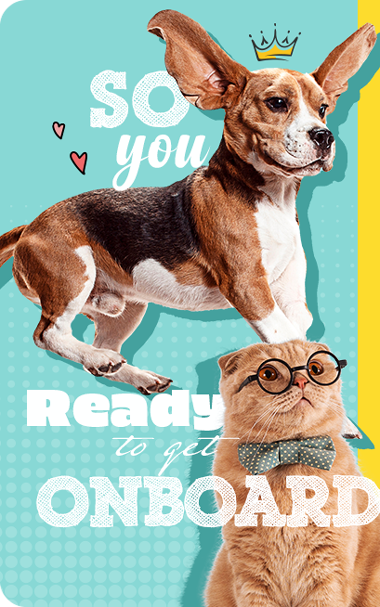What is Barkitecture? The new trend in Pet Industry ?
Posted by Muskan bhardwaj on

Introduction

The history of Barkitecture dates back centuries, with evidence of humans providing shelter for their canine counterparts found in various cultures. Early examples include simple, utilitarian dog houses that served as protection from the elements. As societies evolved, so did the design of these shelters, with some reflecting the architectural styles of the time. In Ancient Rome, for instance, affluent citizens often built ornate kennels for their dogs, emphasising the status and importance of these loyal companions.
2. The Modern Barkitecture Movement
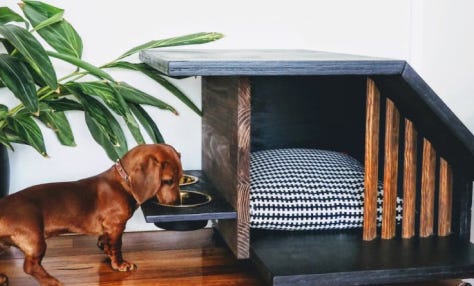
Fast forward to the present day, and the world of Barkitecture has experienced a renaissance. Modern pet owners are increasingly seeking designs that not only cater to their dogs’ needs but also complement their own living spaces. The movement toward sophisticated and stylish pet dwellings has gained momentum, spurred by a growing awareness of the emotional and physical well-being of our four-legged friends.
3. Luxury Retreats for Canines
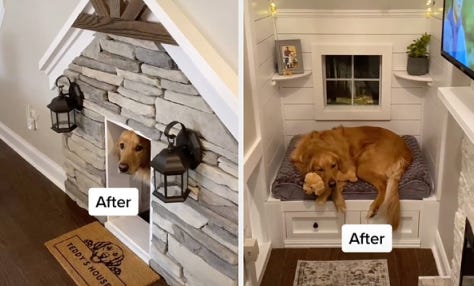
Luxury Barkitecture has become a niche market, with architects and designers creating bespoke doggy mansions that rival the comfort and style of human homes. These high-end retreats often feature climate control, plush interiors, and even customizable elements such as colour schemes and furnishings. Some luxury dog houses are equipped with technology, including cameras for pet owners to check in on their dogs remotely and automated feeding systems.
One notable example is the “Hundehaus” by Studio Schicketanz, a modern architectural firm that created a sleek, eco-friendly doghouse inspired by mid-century modern design. The Hundehaus boasts a green roof, natural ventilation, and a comfortable interior, showcasing how sustainable practices can be seamlessly integrated into Barkitecture.
4. Urban Barkitecture: Balancing Form and Function
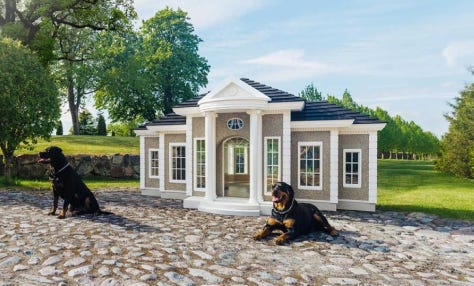
In urban environments where space is at a premium, Barkitecture takes on a different set of challenges and opportunities. Designers are tasked with creating pet-friendly spaces that not only cater to the practical needs of dogs but also enhance the aesthetics of cityscapes. From innovative dog-friendly parks to pet-centric amenities within residential buildings, urban Barkitecture seeks to integrate the needs of dogs into the fabric of city living.
One notable example is the “Zoom Room” concept by Archeworks, an urban design organization. The Zoom Room is a multifunctional space that serves as both a community hub and a recreational area for dogs. Complete with agility equipment, interactive installations, and seating for dog owners, this urban Barkitecture project demonstrates how thoughtful design can contribute to the well-being of both pets and their human counterparts.
5. Environmental Considerations in Barkitecture
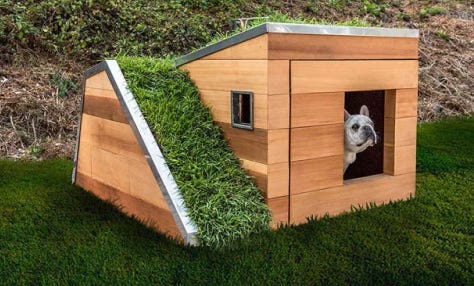
As sustainability becomes a focal point in architectural design, the world of barkitecture is not exempt from eco-conscious practices. Designers are increasingly incorporating environmentally friendly materials and energy-efficient features into pet-friendly spaces. Green roofs, recycled materials, and solar-powered elements are becoming common in both luxury and urban Barkitecture projects.
One innovative example is the “Living Roof Dog House” by Rottet Studio, which features a grass-covered roof that not only provides insulation but also contributes to the overall aesthetics of the structure. The integration of sustainable practices in Barkitecture not only aligns with global efforts to reduce environmental impact but also ensures that our furry friends enjoy a healthy and eco-friendly living space.
6. Community-Centric Barkitecture

Barkitecture is not limited to individual homes; it extends to communal spaces that foster a sense of community among pet owners. Dog parks, once simple enclosed areas for off-leash play, are evolving into thoughtfully designed environments that cater to both the social and recreational needs of dogs and their owners.
The “Bark Park” concept by landscape architects at Boffa Miskell is an exemplary model of community-centric Barkitecture. This park features designated areas for different dog sizes, agility courses, and social spaces for dog owners. The thoughtful layout and landscaping create an inviting environment for both pets and people, encouraging community engagement and enhancing the overall well-being of residents and their furry companions.
7. DIY Barkitecture: Personalizing Pet Spaces
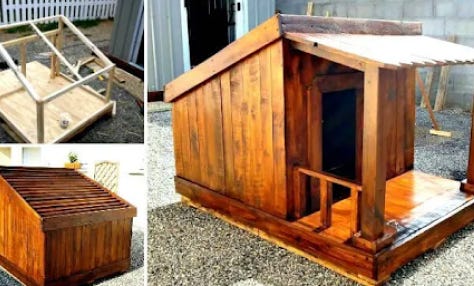
Not all Barkitecture projects require a Professional Architect or Designer. The do-it-yourself (DIY) trend in Barkitecture allows pet owners to unleash their creativity and personalise spaces for their dogs. From repurposed furniture to custom-built dog beds, DIY Barkitecture emphasises the bond between owner and pet, showcasing the love and effort put into creating a comfortable and unique space.
One inspiring DIY project is the “Pallet Dog House’’ trend, where pet owners repurpose wooden pallets to create custom dog houses. This cost-effective and sustainable approach allows for personalization in terms of size, design, and finishing touches. DIY barkitecture projects not only provide a sense of accomplishment for pet owners but also demonstrate the inclusivity of the barkitecture movement, making it accessible to a wide range of individuals.
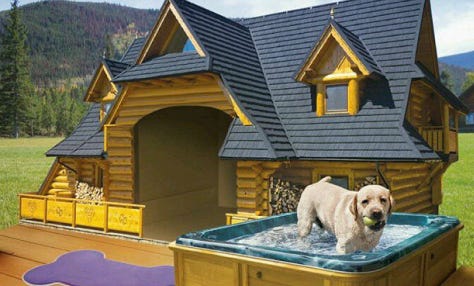
As the bond between humans and dogs continues to strengthen, the future of barkitecture holds exciting possibilities. Advances in technology, sustainable practices, and a deeper understanding of canine behaviour will likely shape the next generation of pet-friendly spaces. The integration of smart home features, biophilic design elements, and collaborative efforts between architects, designers, and pet experts will contribute to the evolution of Barkitecture.
The trend toward inclusivity in pet-friendly design is also expected to grow, with a focus on creating spaces that cater to the diverse needs of different breeds and sizes. From compact urban dwellings to sprawling Suburban Estates, the future of Barkitecture will embrace versatility, ensuring that all dogs — regardless of their living situation — enjoy environments that enhance their overall quality of life.
Barkitecture is a captivating journey that reflects the evolving relationship between humans and their canine companions. From humble beginnings as simple shelters to the luxurious and thoughtfully designed spaces of today, the world of barkitecture has come a long way. Whether it’s a high-end retreat, a community park, or a DIY project crafted with love, Barkitecture celebrates the unique bond between pets and their owners.
As we continue to explore innovative ways to enhance the lives of our furry friends, Barkitecture stands as a testament to the creativity, compassion, and commitment of those who recognize that our pets deserve spaces that not only meet their physical needs but also nurture their emotional well-being. As we look to the future, one thing is certain — the Barkitecture movement will continue to shape the landscape of pet-friendly design, ensuring that our beloved companions live their best lives in spaces designed just for them.





